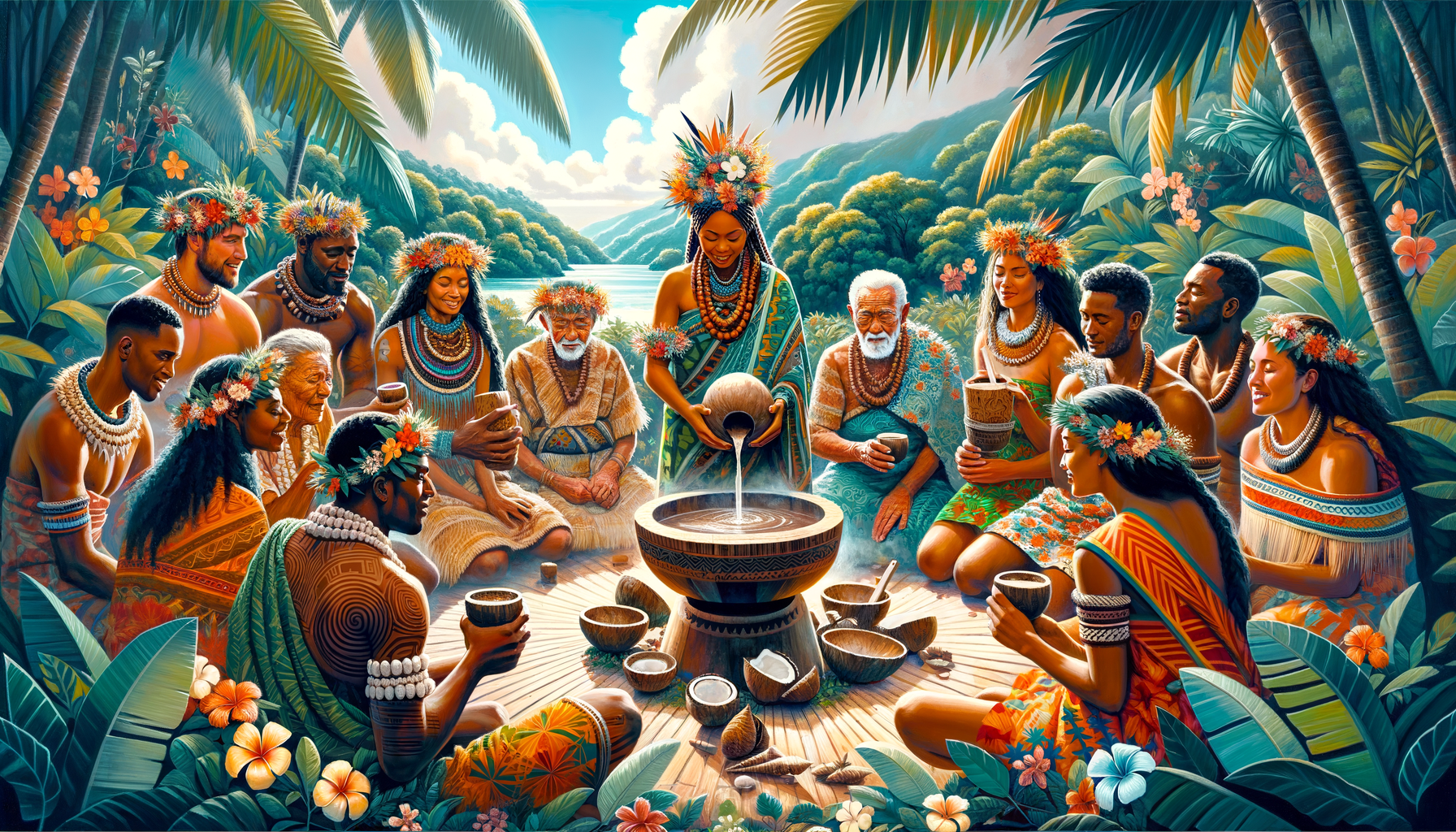Hello and Welcome!
At KavaKist, we want to share the amazing culture of kava with you. Today, we’ll explore the history and importance of kava in the Pacific Islands. From old traditions to today’s customs, kava has a special place in the lives of Pacific Islanders.
Where Kava Comes From
Kava, also called [piper methysticum](https://www.kavakist.com/unwind-with-kava-exploring-the-benefits-and-safety-of-piper-methysticum/), has been used by Pacific Islanders for over 3,000 years. It started with the Austronesian people who found and grew the kava plant. They used it in ceremonies because of its calming effects.
People from Papua New Guinea to Hawaii used kava in social, religious, and medicinal ways. Kava became a symbol of tradition, respect, and unity in the Pacific.
Why Kava is Important
In the Pacific, kava is more than just a drink. It brings people together and has a spiritual meaning. Kava is used in social and religious events, helping people honor their ancestors, celebrate special occasions, and make important decisions.
Kava is often used in ceremonies like weddings, funerals, and initiation rites. Each island has its own stories about kava. In Fiji, a story says that the god Degei gave kava to humans, showing its divine importance.
How Kava is Made
Making kava is a tradition passed down through generations. Here are the steps:
- Harvesting the Roots: The roots of the kava plant are carefully harvested and cleaned.
- Pounding and Grinding: The roots are pounded or ground into a fine powder.
- Mixing with Water: The kava powder is mixed with water and strained using fibers, often from hibiscus bark, to make the drink.
A Story from Matt Warren
Matt Warren, co-founder of Psychedelic Water, remembers learning to make kava from a Pacific Island elder. He watched as the elder skillfully prepared the kava, showing patience and respect for the tradition.
Types of Kava
Different Pacific islands have unique kinds of kava:
- Vanuatu: Known for its smooth and strong noble kava strains.
- Fiji: Popular strains include Waka, with an earthy taste, and Lawena, which is milder.
- Tonga: Tongan kava is famous for its balanced taste and calming effects.
Each type of kava gives a different experience, from feeling mildly happy to very relaxed.
Kava Today
Today, kava is still a big part of life in the Pacific. Kava bars and lounges are popular places for people to gather, relax, and enjoy kava. These places mix old traditions with a casual, social atmosphere.
Kava is now used more freely and helps people relax and connect with others.
Kava and Community
Kava helps build a sense of community. Stories from the Pacific show how kava brings people together, encourages conversations, and strengthens bonds.
Matt Warren in Fiji
Matt Warren shares a story about a community kava night in Fiji. He saw how kava united people, creating laughter and deep connections as they shared stories.
Benefits of Kava
Studies show that kava can reduce stress and promote relaxation, making it good for mental health. It also helps with social and mental clarity, which enhances community and personal interactions.
Bringing Kava Culture Home
Want to experience kava culture at home? Here’s how:
- Get Quality Kava: Find good quality kava roots or powder.
- Tools You Need: Get traditional tools like a kava bowl and strainer.
- How to Make It:
- Measure the kava powder.
- Mix it with water in a kava bowl.
- Strain the mixture using a cloth or fiber strainer.
- Serve in
bilo(coconut shell cups).
Closing Thoughts
Kava’s rich history in the Pacific is still important today. It helps bring people together, promotes relaxation, and holds a cultural value. Check out KavaKist for authentic kava products and learn more about kava culture.
Extra Stuff
- Learn More about Kava
- KavaKist Store Products
- Share Your Kava Stories
!Traditional Kava Preparation
!Pacific Island Kava Ceremony
!Kava Varieties and Preparation Methods Infographic
Experience the magic of kava with us at KavaKist!

Leave a Reply